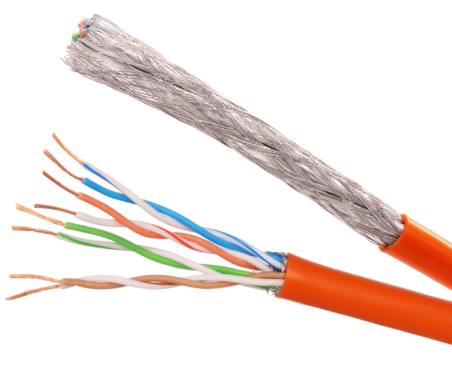By cloudtopcable | 12 January 2024 | 0 Comments
The Science Behind Network Cables and Data Transmission
In today's digital age, data transmission is crucial to every facet of our lives, from personal communication to business operations. However, have you ever wondered how all that information is transmitted through your computer, smartphone, or other devices? Look no further than network cables. These humble cables form the foundation of your internet connectivity and data transmission, transporting information from one device to another. In this blog post, we will dive into the science behind network cables and data transmission, exploring how they work, their impact on network performance, and the technological innovations behind CloudTop's network cables.

Understanding the Physics of Network Cables
Network cables use copper or fiber optic wires to transmit data using electrical or light signals, respectively. At their most basic level, these signals consist of small packets of electrical or light energy that travel down the cable's wires. The principles of electricity and optics govern how these signals move through the cable. For copper wires, the electrical signals bounce off the metal wire's surface as they travel down the cable, while for fiber-optic cables, the light signal bounces off the cable's outer layer through the core. Understanding how these signals move through cables is essential to understanding how data transmission works.
How Network Cables Transmit Data
When a device sends data through a network cable, the information is broken down into small packets and converted into electrical or light signals that can travel down the cable. The cable then carries these signals to the intended recipient device, converting them back into data packets. Network cables transmit data using two methods: Unshielded Twisted Pair (UTP) and Shielded Twisted Pair (STP). The former relies on copper wires that are twisted together in a specific pattern to minimize signal interference. STP, on the other hand, adds an extra layer of shielding around the copper wires to prevent interference from outside sources.
The Impact of Cable Length and Quality on Network Performance
The length and quality of network cables have a significant impact on network performance. Longer cables create more resistance, which can lead to signal degradation. It's essential to choose the appropriate cable length for the network's distance requirements. Similarly, cables' quality affects their ability to transmit signals over longer distances, with lower-quality cables experiencing more signal loss. For this reason, it's crucial to invest in high-quality network cables to ensure reliable and fast data transmission.
The Durability and Lifespan of Network Cables
Network cables must be durable and long-lasting, as they face constant wear and tear, including frequent bending and stretching. The materials used in the cable's construction, such as the outer jacket and inner copper wires, are crucial to its durability and lifespan. Additionally, exposure to environmental factors such as temperature and moisture can impact the cable's durability. Proper cable management, including avoiding kinks and bends, can also extend the lifespan of network cables.
The Technological Innovations Behind CloudTop's Network Cables
CloudTop's network cables are designed with the latest technological innovations, ensuring fast and reliable data transmission. Our CAT6 SF UTP network cables use high-quality copper wires and advanced twisting patterns to minimize signal interference and minimize signal degradation over long distances. The cables are shielded with aluminum foil to protect against electromagnetic interference, and the outer jacket is made with a halogen-free compound, ensuring the cables are resistant to temperature and environmental factors. These and other innovations ensure that CloudTop's network cables provide efficient and reliable data transmission for all your business needs.
In conclusion, understanding the science behind network cables and data transmission is crucial to achieving efficient and reliable connectivity. The principles of electricity and optics govern how signals move through network cables, and the cable's design and materials determine their durability and lifespan. Choosing high-quality network cables and proper cable management are essential to ensuring fast and reliable data transmission. CloudTop's network cables boast the latest technological innovations, ensuring that they provide efficient and reliable data transmission for any business needs.
Demystifying Network Cables: A Comprehensive Guide
Innovative Solutions for Network Connectivity with CloudTop Cable
Leave a Reply
Your email address will not be published.Required fields are marked. *
POPULAR BLOG
- HYA 50×2×0.4 Communication Cable: Reliable Solution for Guangzhou Surveillance Systems
- Why Does Your EV Stop Charging Suddenly? Let’s Troubleshoot!
- Yuedao Intelligent Empowers Guangzhou Metro to Set World Record for Fastest Subway Speed
- Become Our Local Partner - Expand Your Market with High-Quality Cables & Wires
CATEGORIES
